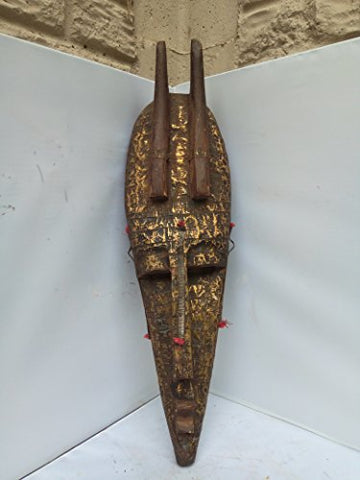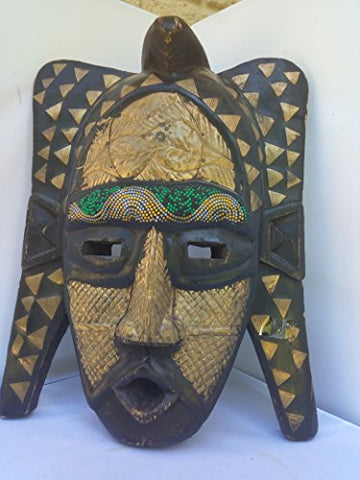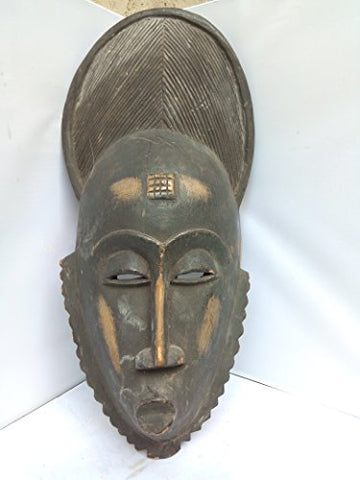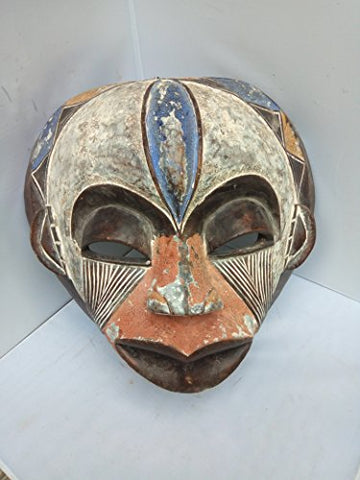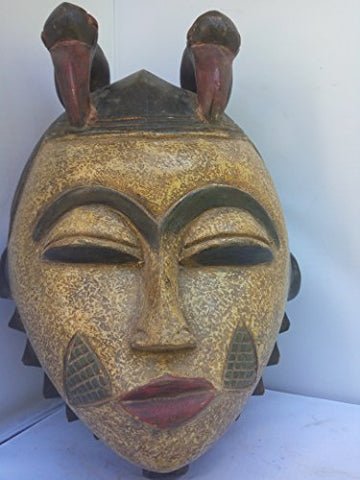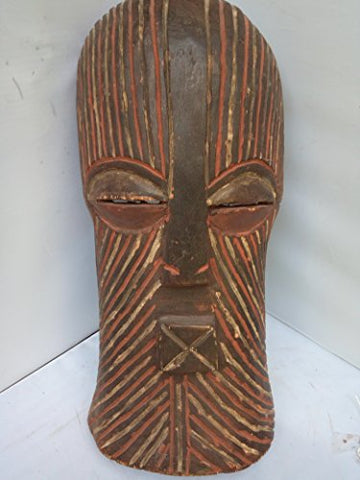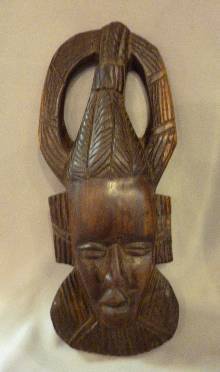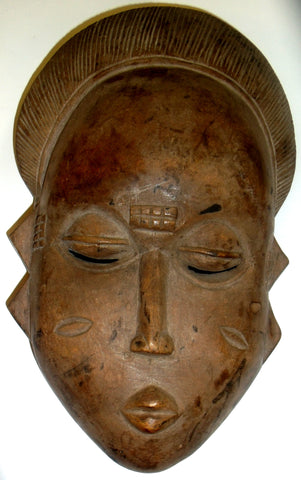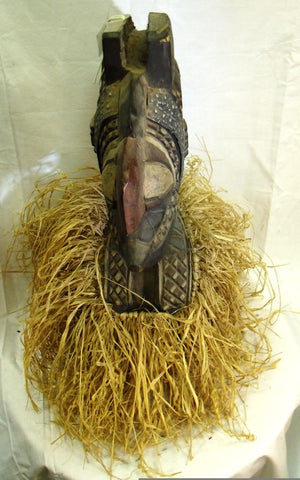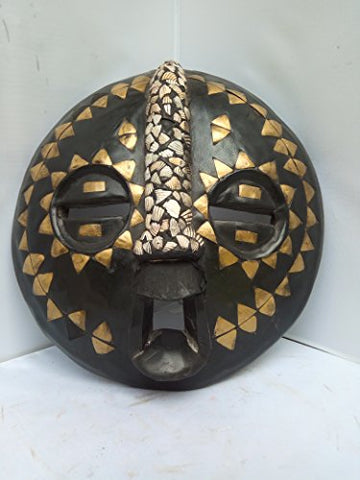Antique Yoruba Gelede Mask 16x6 in
The masks are worn at an angle on the top of the head, with pairs of men wearing similar masks. The masquerade has an elaborate and bulky costume, emphasizing the breasts and buttocks of the woman it represents, showing the desired fatness of a beautiful and graceful woman. The identity of the wearer is not secret; he can be seen through the transparent cloth worn over the face, and he can unmask in public. The name of the dancer may be given in the song which accompanies his act, making him the subject of praise or criticism, depending on the skill and rhythm of his performance. Drumming and singing, essential features of the performance, accompany the strictly choreographed dance. The harmony and balance demonstrated by good dancers shape a metaphor for social perfection, where people help one another, share their wealth and talents, and enjoy the life they have been given. The Gelede headdress often consists of two parts, a lower mask and an upper superstructure. The lower mask depicts a woman's face, its composure expressing the qualities of calmness, patience, and "coolness" desired in women. The static expression and simplicity of this portion of the headdress contrasts with vitality and diversity of the superstructure. The design of the superstructure is intended to placate the mothers by displaying their inner powers for all to see, thus pleasing them and ensuring the well-being of the community. One source states that birds signify the dangerous nocturnal powers of women who act as witches. Snakes symbolize the positive feminine qualities of patience and coolness. A snake coiled around the front also cautions vigilance with the saying "the snake sleeps but continues to see." Gelede artists demonstrate their artistry and mastery of the medium by developing complex imagery within the confines of the basic cylindrical mass of wood.








